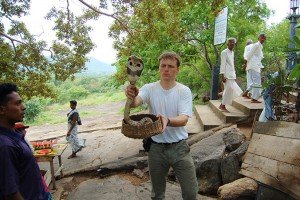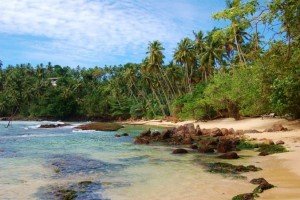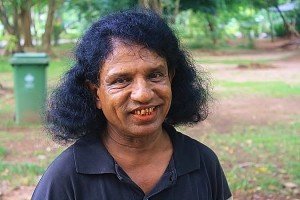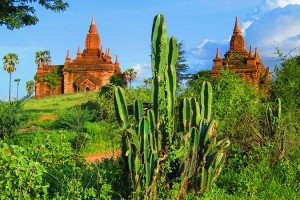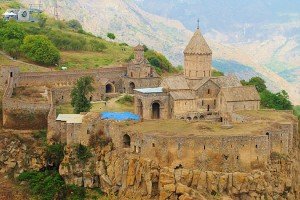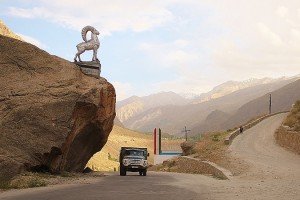India
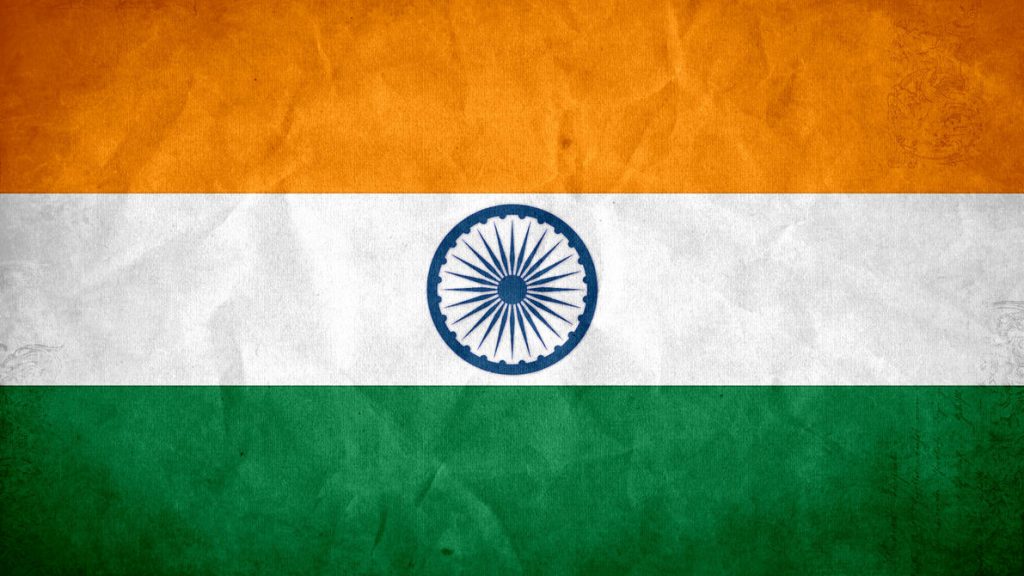
Official name: Republic of India
Population: 1 342 367 000
Area: 3 287 263 km²
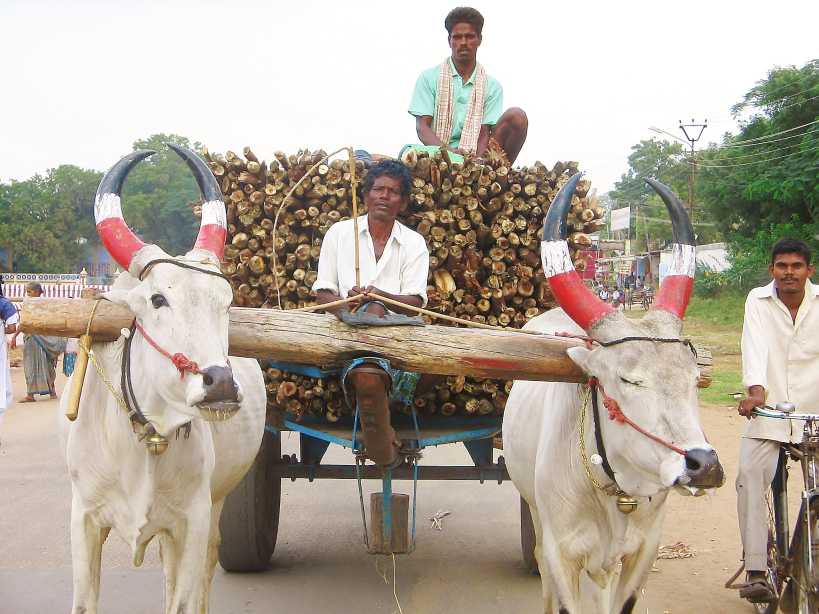
Tourist attractions of India, India – the present times, history of India.
Tourist attractions of India
Despite all the tragic realities, India attracts tourists with a wonderful, different culture, art, exotic landscapes, beautiful architecture (Indian and colonial), fresh exotic fruit, good but risky cuisine, and a very good and cheap lifestyle for tourists, with an open attitude of Indians. India is also a home of Kama Sutra, yoga, fine dining, many spices, beautiful beaches (Goa and Kerala), national parks, rare animal species, the Himalayas and the great wonder of the world – Taj Mahal. India’s great advantage is a kind of magic based on folk beliefs, but also interesting temples, forts, religious makeups and national outfits. India is also a home of painted elephants walking in the streets, holy cows being a part of Indian traffic, rude and cheating rickshaw drivers, ticket vendors and helpful Indians spitting tobacco in the street during colourful festivals. Hinduism I take as a fairy tale and Hindu temples were probably an inspiration to “Alice in Wonderland”. The characters here are for example: a blue man with cobra around his head, elephant man, monkey man, a woman with eight hands and a holy cow. There is no lack of imagination in India although I don’t treat Hinduism seriously.
India is one of the best experiences and the most unforgettable eye openers in every traveller`s personal life, which can’t be ignored. Because of the great poverty we always need to adapt first, but the patient ones will be always rewarded with beauty which India definitely has. India also teaches us like no many other countries do, that we should be humble and grateful for being born in Europe. India however is a country which requires time, because every part of it is completely different, and judging it just by seeing Goa is a great mistake. Listing tourist attractions would take me days, but to the most interesting I include: Rajasthan and its beautiful towns (Jailsamer, Udapuir, Jodhpur, Mt Abu) and the Thar desert safari, Goa and Kerala, Hampi, the state of Tamil Nadu, the Golden Temple of Armritsar, Delhi, Bombay, Culcatta, Bodhgaya, Madras, the state of Orrisa, Khajuraho, Orchha and many more. Expedition around India would also not be fulfilled if you don`t go to Varanasi, which guarantees the biggest culture shock ever. Let`s also not forget about the magnificent places of the north, such as: Ladakh, Sikkim, Darjeeling, McLeod Ganj and Dharamsala (the official residence of the Dalai Lama). Kashmir is also very interesting. Regardless of everything, travellers should keep their eyes open, not to trust the super friendly ones, and have a sober mind. Otherwise India could become the worst nightmare.

With a hard-working rickshaw man in Varanasi.
I think that India should be discovered by everyone in a different way, depending on strength, travel stamina, patience and stomach’s immunity to disease. India can be loved for some things and hated for the others, but travelling around this country will be always a mixture of “heavy landing” with an unforgettable epic adventure. More about the very interesting culture of India in other sections.
Indie – the present times
In the very beginning I have to warn that this chapter will not be enjoyable. Apart from all the beautiful landscapes and the cultural heritage of south Asia, unfortunately it is the poorest of all Asian regions, where there are many diseases and extreme poverty and where as many as 70% of all children are malnourished. Of course these problems apply to all the other countries of the Indian Subcontinent too, but India illustrates this situation in the most painful way. On the other hand I want to point out that India is not just about poverty and disease. There is a lot of beauty there too.
Introduction:
India is located in south Asia and it occupies the most of the Indian Subcontinent. The northern border of the country are determined by the Himalayas. From the south of the Himalayas stretch the lowlands of Hindustan, close to the Ganges plains, the Assam valley, and a part of Indus plains including Thar desert. India is surrounded by the Bay of Bengal, Indian Ocean and Arabian Sea. Today India is divided into 28 states and 7 union territories, including 1 national capital territory of Delhi. India however is so huge that many states are larger than the whole of Poland, and….. “who knows, maybe even bigger than our beloved England”. Each state is like another country and has its own national language although the state language is Hindi. India is also very overcrowded as it is the second most populous country in the world just behind China, with a number of over a billion people. However it has been calculated that by 2030 India will once again become the most populous country in the world.
The extreme poverty of India:
Despite all the natural resources, many crops, great cultural riches left by Indian ancestors and the most perfect conditions for tourism industry, India is still an extremely poor country, even though it is one of the fastest growing economies in the world. India has to fight with a number of problems fully deserving to be called a developing country. In India 53.7% of the population lives in poverty, what means that about 650 million Indians live on $1.25 per day without providing the basic humane conditions. Out of these 650 million 340mln (28.6% of the population) lives in extreme poverty, and 198m (16.4% of the population) stands at the door step to poverty. This means that the number of people in India affected by extreme poverty i every day misery is higher than the 410m living in 26 countries in Africa. In addition, there are also different levels of poverty, because as much as 69% of the population ( 841mln Indians) live on less than $2 a day. This means that they are also extremely poor, but live on little more than $1.25 per day. The Indian government announced that by 2015 the level of poverty will fall from 51% to 22%, but the Indian government has already promised a lot of things. Until now India is a country of huge divisions and caste system, and for example the level of poverty in Orissa is 43%, and the state of Bihar 41%, which is the most extreme outcome in the world. Many governmental and non-governmental organization help in family planning, agriculture and fight against hunger, but a fatal level of education and complete lack of hygiene hinder progress. It is interesting that after gaining the independence many Asian countries such as China, South Korea and even Singapore began its independence with the same level of poverty as India. However, those countries have achieved success because of the open market, and India began with closed economy modeled on socialism. I could say a lot about Indian unemployment now, but another interesting thing is that as many as 60% of Indians cultivates and, despite the fact that it gives only 14.6% of GDP. In comparison with South Korea in 1947, earnings in Korea and India were the same, but Korea has become a developed country in 2000, and India is still one of the poorest countries in the world.

Next to the cultural heritage and natural beauty India has shocking poverty.
I don’t want to defend the British but a clear fact is that when they were in power a lot of things were for the benefit of the occupied countries and those people. If things get even worse they might miss the colonialists one day. For example, South Africa was much safer and healthier for Negroes during apartheid than it is now. Sad but true, even in the extremely politically correct times.Therefore I do not believe in accusations of some Indians and I do not believe the extreme far left British propaganda, that the British Empire is guilty about everything. I have explored many ex-British colonies, and I am able to prove that the British Empire did also a lot of very good things!!!
The economic reforms carried out by the Indian government were very pathetic because in rural India people had on average 100kg of food per year less than 10 years before the “reforms”, and almost 50% of Indian farmers did not have enough to eat, what according to official figures resulted that every year around 250,000 commits a suicide. In response, the Indian government spends on agriculture only 0.2% of its GDP per year, which further deepens poverty, famine and mass suicide. 230m people in India are malnourished and 43% of Indian children have low body weight! All the uplifting spirits official economic data, economic growth and huge industry in India, to an average Indian is pure fiction, because the money reaches only a handful of people in the government.
Poverty in Delhi or Culcutta is now legendary and causes chills, but Mumbai for example is one the biggest slums of the world, where statistically 1km2 is inhabited by 21 000 people. Another slum called Dharavi is a very unfortunate home to more than 1 million people. It is of course a cradle of disease with a complete lack of sanitary or medical help. On the other hand however, a slum like Dharavi produces things exported worldwide – another words to us. Production of a flower vase for example costs just a few pence, and renting a workroom in Dharavi costs only $5 a month. The extreme poverty and suffering pays the Indian government very well, because it sells everything to Europe and America for pennies, and unfortunately this situation works perfectly for us too, where we are fed with a false propaganda of “fair” trade. Someone who only reads English newspapers will probably believe in everything including such nonsense as “fair” trade or “salvation” which comes from globalization. Someone who knows the Subcontinent knows that “fair” trade is a pure fiction. On the other hand the Indian government has nothing to worry about, because India will never run out of people, and there is more than a billion to work for free and die in a swamp. This is the true India which you can not see from the gardens of Taj Mahal. By the way, Jamuna river which passes Taj Mahal is severely polluted, but this information does not appear on a ticket.
Very closely related to this problem is unfortunately, also child prostitution. It is estimated that India could have up to 10 million prostitutes, including children. India has the highest rate of child work related abuse at a scaring number of 115m, as per official data. A lot of children work as full time employees in silk manufacturing, bricks, carpet production, and they are used in prostitution too. Poverty in India is extreme and socially acceptable, exactly in the same way as chai. In India nobody cares about it and death is as usual as the poisoned air of Delhi, or the “holy” Ganges river. I often saw people dying in burning sun, with faces stuck to the concrete. It was also a moment in which I learned a lot about the “good will” of Indians. When I bought a couple of liters of bottled water to bring the poor to life, the Indians standing nearby were extremely surprised and laughed at me. To most Indians life of another person is not even worth 10 rupees (20 pence). After all my experiences I’m not surprised but this cruel reality anymore, because in a country where children are permanently wounded just to make 5 pence on them, gives me a clear explanation that people in India do not have any mercy or compassion for each other.

On the beach in Chennai with a coconut vendor. This is beautiful India.
When I was in Culcutta, whilst walking between the beggars I got to the Mother Theresa`s Dying Home, where I worked for free taking care of Indians, who were already above the grave. I gave them food and water, I helped them to walk and move around, just to have to later put some of them into coffins and take them out. Mentally it was a very challenging job. Tragedy in India is the “every day bread”, and it is even more tragic because all these horrors could be avoided, if there was at least a basic sanitary and medical care. For example, I cared for a man whose legs were cut off by a train, because when a crowd was crossing tracks, he fell. Another man had fatal bedsores, and that`s why I had to remove his dead skin with a scalpel. If there had been just anyone to move him around. There was also an old man whose family kicked out of his flat and threw acid at him for good bey, what resulted in a skin burn. Another big chapter are the permanently injured adults and children, who by gaining mercy beg for the man behind them. These dealings are severe although the Indian government does not see any problem. Once on a train I saw a “spiderman”. A beggar whose hips were broken out upside down, and that’s why he walked like a spider. Welcome to India!
Apart from all the bad news I could say a lot of good things about the impressive economic growth of India, and many kinds of industries. Cold statistics show great achievements of Indian economy, and industries and export could be a reason of admiration, but after walking in the streets of India and watching the extreme poverty, economic data are easily forgotten. About Indian people their government simply forgot. Overall however I suggest to not to give up, go to India and explore this vast country in a slow pace, looking for diamonds between the horrors of every day life. There is a lot of beauty there too, although I advise to not to look for common sense in anything.
The source of poverty and the sick Indian mentality:
I think that India`s problems could be solved quite easily if the ruling class was simply removed, because they get super reach on horrors of their own people. I also think that religion, the same as vodka, is only for wise people, and in India there is too much religion. It should be exchanged into education to simply improve the lives of those are still alive. I`m also wondering why in front of the main gate of Taj Mahal Indians die of starvation, if the Indian government makes thousands of dollars out of it every day. This question will unfortunately remain a rhetoric.

Two races, two civilizations, two cultures.
On the other hand the problem in India is not only about the lack of money and education, but the sick mentality of the people. Poverty is inherited from generation to generation and even if the Indian government offered real help, many millions would still live in the streets in an extreme poverty, without even knowing how to use a condom. Hindus (the same as a lot of Muslims) do not understand that religion can be also a poetic metaphor and it shouldn’t be treated as a definite guidebook to life. This means that not every cow is a holy one and maybe those which are not holy should feed dying people with their own flesh. I therefore think that poverty is a great problem of India but ignorance, mental limitation and lack of education are the equally big problems.
One more thought comes into my mind. Taking into account the ever growing population of India, its strong army and nuclear weapons, it is a gift from God that India is not another Pakistan style Muslim country. If that was the case, then it would have to be either our end or theirs. I also understand why India invests so much into weapons and nothing into its people. Close proximity to Pakistan and growing in strength China are only the two reasons. The Indian government does not treat Indians like humans but like animals that reproduce without madly, whether they are poor or not. In case of attacks from the west or north such a large population of very poor people is needed by the Indian government because they would act as living shields which the government can happily sacrifice. This philosophy comes from the Indian caste system.

Indian faces are another chapter of my travels around this country.
Economy:
Before starting my description of the Indian economy I want to say that all the uplifting news about the official economic data, the economic growth and huge industry of India, to an average Indian are all pure fiction because the money reaches only a handful of people in the government. India and Indians in general should be the richest in the world and it should be a self-sufficient country because India is drowning in wealth. For that reason it does not matter how rich India is, because socialism is a system in which poverty is divided equally.
Indian economy is the 10th largest in the world and the 3rd largest based on purchase of goods for the equivalent of one dollar at specified time periods (PPP). On the other hand India is only on the 125th place in the world taking into account earnings per single citizen (GDP), which coincides with the extreme poverty. From 1947 until early 1990s India had an economic system based on closed economy modeled on socialism, which led to massive corruption and deepening of poverty. After 1991, India began to move to a free market system. Today India is one of the fastest growing economies of the world, due to cheap labour and huge and well-matched foreign investments, and also still growing engineering and education. India’s economic growth for 2011/12 was 6.5% which was a great success, and just for a comparison the Polish economic growth fell from about 4% to 2.5%, what means that the Polish economic growth is weaker and it looks that Poland should be poorer. On the other hand, comparing to India the standard of living in Poland is extremely high, and one method of calculating the “wealth” of the country is the revenue per citizen. India is on 125th place while Poland is still at a very low 45th place (UK – 22nd). In my opinion, a powerful economic growth of India is based primarily on the extensive exploitation of the people by the government, and for any necessary price paid by the people of India alone. Despite the great economic growth, India still has one of the highest inflation and public debts of all quickly developing countries.
Service industry represents 52.7% of the GDP of India, industrial sector 28.6% and agriculture 14.6%. In rural areas 52% is engaged in agriculture, although it is not a profitable occupation (described above). The main industries of India are: telecommunications, textiles, chemicals, food processing, steel, transport equipment, cement, mining, petroleum, machinery, software and pharmaceuticals. India is also rich in natural resources, such as: oil, gas, coal, gold, emeralds, and more. Crops are mainly: rice, wheat, coffee, tobacco, peanuts, bananas and coconut palm trees. They also keep animals for milk and meat. Total labour force of India is 500 million. If any of the European countries had such a big and well-trained work force and if they deported at least all blacks and gypsies, then they would quickly become a super power because crime would be virtually non-existent and there would be less pests. India has also a very well-developed foreign trade, reaching about $800 billion a year, what puts them at the forefront of all time best.
Is it quite obvious now that the Indian government could afford to feed, educate and keep its citizens healthy and also cure its natural environment??? It could be done but first they would have to want to do it!

If English and Polish children did laundry in a river they would have more respect to everything and they would behave better. Udapuir.
Education:
Education in India is state-owned and private. However, due to very low quality of education only 80% of children attend to private schools. The Indian government provides free education until 14 years of age and it banned child labour to encourage attendance. On the other hand this is just a theory, which does not coincide with reality. In India it is also possible to study at home which is equivalent to working in a field. If parents do not want to send their children to school the government has no problem with that. In general the education system in India is very problematic because there are no properly educated teachers, there is no adequate number of teachers to the number of students, and there is no teaching equipment. The Indian government however, does not see education as its priority. Education in India is at such a very low level, that more than half of children from the slums attend private schools. There was a research based on 188 state schools, which showed that 59% had no drinking water and 89% had no toilets. 88.5 million children are enrolled to secondary schools but only 31m attend schools on regular basis, what means that two-thirds regularly leave school activities. Especially girls are very marginalized as only 50% of all women in India are able to read and write. In higher education “professors” often do not have a doctorate or even a master’s degree.
Literacy in India is at the tragic level of 74%. Another words 304m Indians are illiterate. The national average is improved by the state of Kerala, where almost 94% can read and write.
Health:
Also in this topic it is very difficult to “compete” with India. 42% of all children in India are malnourished, what puts even the poorest African region far above, because over there “only” 28% of children are malnourished. Although India’s economy expanded by 50%, child malnutrition has improved by only 1%, what puts the Indian government in a very embarrassing situation. Approximately 1.72 million children in India die before turning 1. Most Indian hospitals are just empty buildings without any equipment or basic hygiene. Only 43.5% of children are vaccinated and those who are vaccinated are also infected with viruses including HIV, because there are no sanitary facilities and hygiene. 122m houses have no toilets and 33% do not even have latrines. This means that half of the Indian population (670m) “takes care of themselves ” outdoors, what only spreads disease even faster. Only 68% have access to clean water, and in the slums only 28%. Hospital care does not exist, and maternal care is a true life horror, because 44% of all mothers seriously fall ill after the birth. Maternal mortality in India is one of the highest in the world, and breast cancer wreaks havoc. Part of the Indian tradition is that a woman should eat at the end, what further leads to malnutrition of pregnant women and their newborn babies. Generally health care in India covers only 30% of the country, and even so at a very low level. When it comes to the rich variety of disease I could go on and on, because India is the worst cradle of all disease. Apart from outbreaks caused by dirty water, India is a worldwide leader in: malaria, tuberculosis, hepatitis, rabies, polio, HIV/AIDS, and honestly hundreds or even thousands more. India is in third place in terms of HIV infection, what means that about 2.5 million are infected with the virus. This means that this terrible number of HIV infections is equivalent to the entire population of Latvia and part of Estonia. Let`s imagine a whole country infected with HIV – in India it is 2.5 million, although South Africa and Nigeria have even more.

Taj Mahal.
If Indians read my report and tried to convince me that it’s not true, I would tell them that my personal observations confirm all the above. Medical care is a fatal joke. When I went to a hospital in Varanasi I had to buy my own bandage, plaster and a syringe, and the hospital itself scared me so much that I made an injection by myself in a hotel room. Hospitals in India bring more disease! Apart from that, hygiene in India simply does not exist what especially in this country represents a truly disgusting picture. I will give only few examples because of an extremely sensitive reception of my readers. Indian men urinate on the public toilet`s wall which is a breeding ground of the wildest disease, just to save a magical amount of 1 rupee (1 penny), and then without washing their hands they eat with them, and put their dirty hands into their mouths – and say that this way they feel the taste of the meal much better. India is a total denial of “basics of the very basics” of hygiene, where a two week black oil used for frying dangerous meals at a bus station is still considered as fresh. Filth and poverty, I`m sorry…. Hygiene is better only in typically tourist hot spots. Little tourist villages in India are of a charming beauty, as long as we are not harassed by rickshaw drivers and pushy vendors.
In India, there are also 125 million mentally ill people and there will be even more; because of poverty, lack of medical care, massive illiteracy, rampant urbanization and discrimination. Let`s imagine that combined population of Britain, Poland, Netherlands and Belgium are all mentally ill. This is exactly the case in India, and the Indian government spends less than 1% of its GDP on health.
The problem is however that according to the New World Order, the Third World which lives in Europe also brings their diseases with them.
Culture/Religion:
The main religion in India is Hinduism (80%), although there are Muslims (13%) and other minorities. At the border with Pakistan, in the state of Punjab is the Sikh`s Golden Temple (18m), and mainly in the south there are Christians (23 million). It is a remnant of the Portuguese colonization in the states of Kerala and Goa. Although India promotes religious freedom, as it turns out not only Europe has a big problem with Muslims. In 1921 100.000 Hindus were killed by Muslims for having refused to convert to Islam. There was also a number of other attacks, as usual made by the followers of religion of “peace”. Hinduism is the main religion of India and it is very visible in the culture and art of the country. In my point of view Indian culture is full of imagination and all its beliefs were probably an inspiration to “Alice in Wonderland”. It is a compliment on my part, because few nations have such imagination and wealth in the form of architecture, costumes, makeup and folk beliefs. Moreover, Indian culture varies depending on the state, as India is enormous and each region the culture is a little bit different. I want to recall that for centuries the south and the north were developing separately, what is reflected today. National Indian costumes and make-ups in my opinion feature too many decorations, tattoos on the hands of women and also jewelry attached to the nose. During weddings and family reunions, Indians try to show their lavish lifestyles with overdone forms. Also turbans are characteristic for India, and are very useful in hot climate.
Women in India are without comparison more free than women in Pakistan, because Hinduism does not prohibit revealing the body. Furthermore, given the dire economic situation of Indian homes, women take business in their hands and large work force of India consists of women. Marriages are still arranged according to the caste system, what means that parents of the same social groups arrange relationships for their children. However in India young couples have choice as to whether they like the partner chosen by the parents. (In Pakistan they simply don`t have that option). It`s been also calculated that about 20% of marriages in urban India are love marriages according to the Western model. Unfortunately divorces are rising in India, with about 80% of women ending a relationship. As you can see it’s not easy to win with Indian women, but from my observations it appears that Indian men don`t know how to treat them. Bad smell, dirt and spitting with tobacco, next to financial problems are just some of the reasons. Although Kamasutra originated in India it has nothing to do with the current Indian culture.

Cobras are very popular in India.
India has also yoga, its national dance, and cuisine which is delicious and famous all over the world. India has among other things: tandoori, masala, curry, and many types of bread, and Indian cooks can prepare vegetables in hundred ways. Fruit sold on the streets and the famous chai tea are also a part of Indian culture. I have to point out however, that Indian food in Malaysia or England is safe, and in India it can make seriously sick. India is also a home to Bollywood, which is full of colours and dance, theatrical, unreal cinema, with easy and not mind challenging stories. I think it`s good because Bollywood`s dance and richness of colours keeps many people alive. In Pakistan for example they love Bollywood and watch those films with bated breath, but no one will admit it because they are against Islam. India is also the world capital of cricket, which is the most boring out of the most boring games in the whole world. They sell mystery food during the games which immediately runs people straight to the toilet (a hole behind a tree to be exact). I also want to add that for religious reasons killing cows is forbidden in India, although in certain states beef is very popular. Catholics in the south like beef very much.
India’s cultural wealth is much greater than Taj Mahal and it is worth exploring. From a cultural point of view India is a very interesting form of education, but it is important to be able to separate the culture from the sad reality. The culture is closely linked to the history of India, which is described below.
Media:
Freedom of the press and the state of extreme poverty in India looks exactly the same. India beats and persecutes its journalists, and is very reluctant to give visas to foreign journalists. On the press freedom index India took 131st place, what means that a greater freedom of expression is in countries like Liberia and South Sudan. In India the situation has come up to such a level, that there are even government mafias which specialize in intimidation of journalists. In general, anything that does not fit the Indian government is seen as “obscene” and “immoral” and is associated with consequences. Because India is an ally of the West this situation is silenced to the maximum but we should realize after all that India is a totalitarian country.
Environmental problems:
Nature conservation in India is critical!! About the environmental issues of India I could write a lot, but I will limit myself just to few sentences. First of all India is drowning in garbage, which are tipped in the streets, and then rot and create disease. From what I noticed, there are no waste dumps in India, because the whole country is a dump. Even Yamuna river near Taj Mahal is also very polluted, and diseases such as whole of the Ganges habitat do not need any introduction. Apart from water high in the mountains, all water in India is generally poisonous, and it`s the main reason for most disease and food poisoning. India is also the largest carbon dioxide emitter in the world after China, what means that in many parts of the country there is no air to breathe, and sun barely penetrates the smog. There is also a great noise pollution. The massive population lives in dirt and pays a high price, because speakers on all temples emit a huge amount of decibels, and Indian drivers cannot live without their horns. As if that was not enough, apart from many other pollution, the huge but primitive industry polluted the state of Punjab with uranium. When the British were in power they protected the natural beauty, but after gaining independence Hindus changed their own country into filth. Nature conservation in India does exist, but exactly in the same way as everything else – by turning blind eye to all problems. When I was in India and I asked about a trash bin or a toilet, Indians told me that trash and toilet were everywhere, and I shouldn’t worry about it because it`s India. This is another proof of the Indians` sick mentality, which tells me that India is not really a country, but chaos stuck together with its own dirt.
Greed plays a very important role because it has been calculated that India kills their forests to make room for palm oil plantations, and the annual consumption of wood in India reaches up to 70 million m3 per year. For example in Indonesia low land tropical forests have been almost cut out completely. This will have a huge impact on the future of planet Earth, destruction caused by natural disasters and outbreaks of wild epidemics.
On the other hand, India has one of the world’s richest flora and fauna, and one of the largest afforestation in the world. Natural richness of India is a reason of great admiration. India has a huge number of national parks and beautiful, unique animals living in them. I must also praise India for protection of white tigers and gharials, although on the other hand for few hundred dollars you can shoot in India whatever you want. Unfortunately I simply do not know how much of the beautiful nature will survive, because the population is growing at a sprinting pace, and just outside of the national park`s main gate Indians burn garbage and cook food on it, and vomit straight after.
Someone might say that the blame for this tragic situation takes only the large population, but this is not true. Many European countries and rich countries of Asia are as equally populated as India comparing to their own size, but the quality of life and level of cleanliness are incomparably greater. In my opinion Indian’s great mental callousness, ignorance, sick mentality and lack of education are the reasons to blame. However the greatest tragedy is, that all problems of the third world and its sick mentality we have already in Europe.
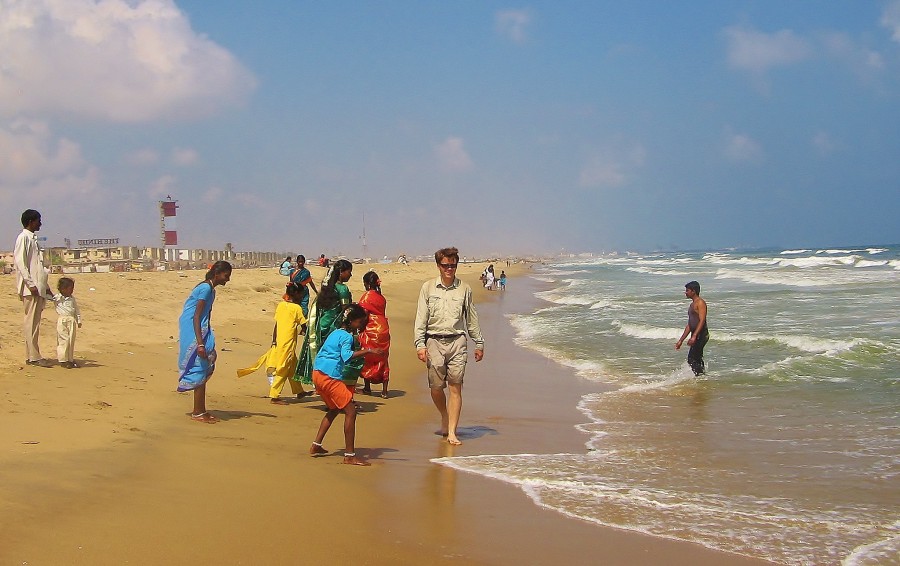
On the beach in Chennai (Madras).
India has now 57 critically endangered animal species, including: Bengal tiger, snow leopard, one horned rhino, fruit eating bat, and many species of birds, reptiles and marine mammals. Indians are a nation that has absolutely no respect to anything and thinks only about itself. Next to the great natural beauty and cultural heritage of India majority can only breed and transmit disease and if the whole stupidity and nonsense of India could be converted into litres it could easily fill the whole of the Indian Ocean! A lot of Indians agree with me on that what only proves that I’m right! Indians are so extremely greedy and money saving that they would even wipe themselves with a piece of broken glass just to save on toilet paper. It is extremely sad because India is very beautiful and has a lot of hard working people, and with the right management it should be the richest, best educated and the cleanest country on the planet.
History of India
History of India is a colourful, epic tale of thousands of years. It is a story of great civilizations, wars and invasions, many religions and disasters, and in such a big country like India history is divided. History of northern India was separate and different from the southern part.
I`ll start from the Indus Valley which derived from the present border of India and Pakistan, which is a cradle of the Indian Subcontinent. These lands were inhabited by nomadic tribes, first recorded in a written way about 3500 BC. They mainly engaged in cattle breeding and earth cultivation, and from what I’ve noticed whilst travelling around India, in its many parts not much has changed today. Soon, the region began to grow in strength as among many others it traded with Mesopotamia. This was also the time of first development of Indian art and culture, and so called Harappan civilization began to be increasingly identified with Hinduism. During this period, in culture, art and then also in religion, hindu gods as Shiva and Kali were being created. The next centuries were the times of falls of civilizations dues to wars and invasions. Among other things, the north-eastern India began to be conquered by Aryan peoples from Afghanistan and Central Asia, which later controlled the entire basin of the Ganges and northern India. (Do not mistake the ancient Aryan peoples with the Aryan nations – the present, noble protectors of Christianity and White people). Then the Subcontinent avoided (but not quite) two major invasions from the west, that could change history forever. First invaded the Persian King Darius (521-486 BC), who took the provinces of Punjab and Sindh (on both sides of today’s border between India and Pakistan). Then Alexander the Great invaded the Subcontinent from Greece in 326 BC, but when his troops refused to move towards the Indian Himalayas (the current state of Himachal Pradesh), Alexander turned back without extending his power to India.
Southern India however, separated by great distances and political changes in the north, developed its own unique history. The north was also dominated by smaller, separate kingdoms dominant mainly in the south, but sometimes extending its influence in the Central part of the Subcontinent, and even to the north. Prosperity of the southerners was very well organized and based on trade with other civilizations, including Rome and Egypt. In exchange for pearls, spices, ivory and silk, the Indians received precious Roman gold. Soon, this trade also expanded into South East Asia. One of the kingdoms called Raja Raja grew in such a strength, that it controlled the whole of the southern India, Ceylon, the Malay Peninsula and part of Sumatra. Although from my description it appears that the concentration of south India`s forces was mainly focused on the outside, at this time were built a lot of beautiful temples in southern India, and the Hindu religion was still leading.
Then came the Mauryan empire, which rule the majority of northern India including the Indus Valley, reaching as far south as the present state of Karnataka. For several centuries, they were able to maintain control over such a large area with not only a strong military, but also because of the skilfull bureaucracy and links with local governments. The end of the Mauryan empire was flourishing during the reign of King Ashoka, but after his death, no one could control separate kingdoms and empires made up before the Mauryan empire, and therefore the final end of the great Mauryan empire ceased on 184 BC. Then, small kingdoms and empires began to govern their own territories. Despite of the “inconsistency of the northern part of Subcontinent” and separation into small countries, trade flourished with the Roman Empire and with China. Partly because of trade many works of art, poetry, literature and sculptures were created during that time. We can still admire the stunning evidence of them today, such as Ajanta and Ellora caves (today state of Maharashtra), and Hinduism became the dominant religion. Then, for several centuries domination was taken over by Gupta empire, which finally fell in the VI century, and northern India was divided again into many Hindu kingdoms.

I came back to India from Pakistan, where I almost carried out the Catholic Revolution.
Southern India however, separated by great distances and political changes in the north, developed its own unique history. The north was also dominated by smaller, separate kingdoms dominant mainly in the south, but sometimes extending its influence in the Central part of the Subcontinent, and even to the north. Prosperity of the southerners was very well organized and based on trade with other civilizations, including Rome and Egypt. In exchange for pearls, spices, ivory and silk, the Indians received precious Roman gold. Soon, this trade also expanded into South East Asia. One of the kingdoms called Raja Raja grew in such a strength, that it controlled the whole of the southern India, Ceylon, the Malay Peninsula and part of Sumatra. Although from my description it appears that the concentration of south India`s forces was mainly focused on the outside, at this time were built a lot of beautiful temples in southern India, and the Hindu religion was still leading.
While southern India was Hindu in nature, northern India was attacked by Muslim armies from the north-west, from the area between Kabul and Kandahar (present Afghanistan). As a result of it the whole XI century was a time of Muslim invasions and many bloody battles. A lot of gold and other riches were taken away, balance in the region was disrupted and random rulers took part of stolen territories. After several great battles, and after an Islamic ruler became the Sultan of Delhi, almost all of northern India was under Muslim control. (Qutb Minar was built at that time, which today is one of the major tourist attractions of Delhi). The name of the Muslim rulers which is worth mentioning is Mohammed Toughlak, but his empire fell apart very soon, because the south was becoming increasingly rebellious, and the Sultanate of Delhi was divided into smaller organisms. Then the north merged for 200 years, and then the whole of India began to be ruled by small, separate kingdoms and sultanates, both Muslim and Hindu. When two of them grew in strength there was a great slaughter, which did not solve anything in the space of two centuries. There were few strong states in those times, but only the Mughal Empire managed to lighten up Indian future.
For our beloved Europe, the modern India was discovered by Vasco da Gama, who sailed around Africa, and got the the coast of the Subcontinent in 1948. A little later (in 1526) a leader named Babur defeated the last Sultan of Delhi and founded the Mughal dynasty. The most eminent ruler of this dynasty was Akbar (1556-1606), who created a great empire covering much of modern India and parts of Central Asia. He was a great ruler not only because of the great military power, but also because of the cultural and diplomatic reasons. It does not mean that he was a saint in his actions, but argued for freedom of religion and he finally united the Subcontinent. In his Empire he used to appreciate and integrate also Hindus, who he used as his advisers and generals. During the Mughal Empire were created timeless monuments like Taj Mahal, Red Fort in Delhi, and fort in Agra was converted into a palace. Later there were several another rulers of that empire, but the decline of Mughal power coincided with the governments of Muslim fanatics under the reign of Aurangzeb. It was also the time when the states of Punjab and Maharahstra separated. There was also a strong pressure from the south, by the Confederation of Marathas, who appealed to the age of great Hindu kingdoms. Finally however, the final defeat of the Mughal rulers took place when the ruler of Persia conquered Delhi.

White woman with Indian women.
This way we are entering into the VIII century, which is my favourite chapter of Indian history. It will be a story about fights and competition for the Subcontinent by the European powers.
India was the largest British colony, though the British were not first here. First, the Portuguese colonized India, who began to trade through eastern Europe, but they were not as strong as the Dutch and the French, who soon after arriving in India took over. Then the British grew in strength, who were trying to get rid of the French (mainly from the southern part of the country) by a stronger trade. The British already had their ports, and they began to establish their businesses in the Subcontinent, not giving a single chance to other European competitors and local firms. As a result, in the early XIX century the whole of India was under control of Great Britain, and Queen Victoria became the Empress of India. The official language was English and certain ways of governing the country in the British way have survived to this day.
After the Second World War, the British could no longer keep the Subcontinent under control, that`s why they gave India its independence in 1947, leaving a huge mess. It is worth saying that at all times the greatest fighter for Indian independence was Mahatma Gandhi (now shown on each Indian banknote), who fought for independence in a peaceful manner and became a world figure. Many years before winning independence he soften up hearts of the British public, but not the British government. Independence came itself many years later. In 1947 there was a division of the Subcontinent. The British drew a line on a map, taking into account two major religions of the Subcontinent – Hinduism and Islam. In some areas it was known where was the vast majority of a particular religion, but not in all of them. That is why in 1947 the north-western part of India was separated, an Pakistan was born. Then, Muslims from the east went to Pakistan and Hindus from the west went to India. It seemed to be very simple but conflict arouse, and about a half a million people died. Until today there is a conflict over Kashmir between India and Pakistan (and China too) which claim their rights to this beautiful land, and that`s why war erupted between India and Pakistan. Thousands died in the years of conflict, during which violence came mainly from the Muslim side (Pakistan). During division of the Subcontinent, from the north-eastern part of the Subcontinent was created East Pakistan, which because of the won war of India over Pakistan in 1971, won its independence and now is known as Bangladesh.
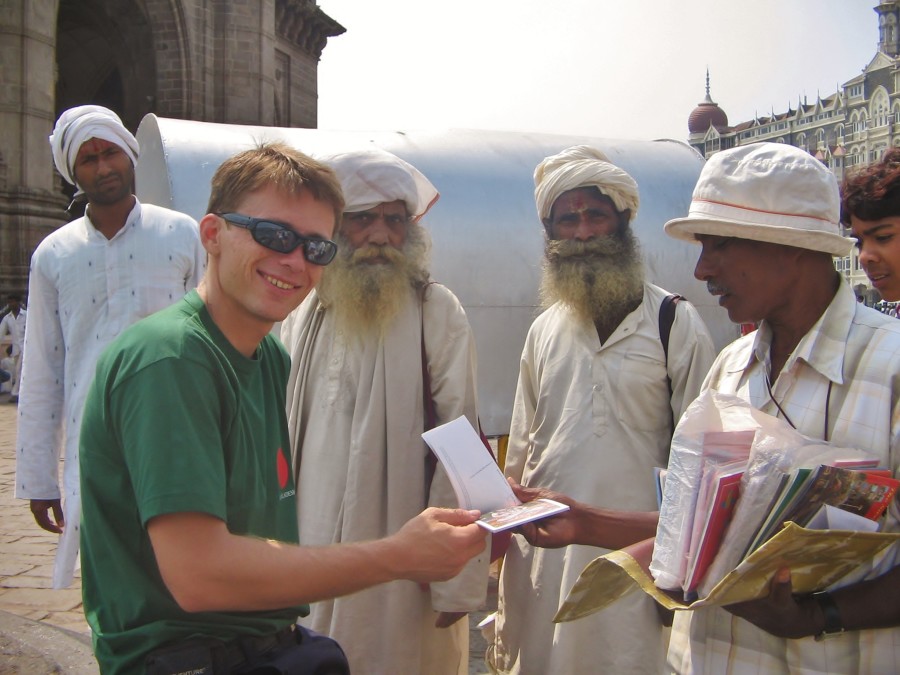
Aren’t they the guitarists from ZZ Top?
I also invite you to read about other countries of the Indian Subcontinent described in this website. It wouldn’t be a story as big as the one about India but they are definitely very interesting and a colourful reads. From this part of Asia, apart from India I also recommend: Nepal, Pakistan, Sri Lanka and Bangladesh.
Travel reports
Map
Location
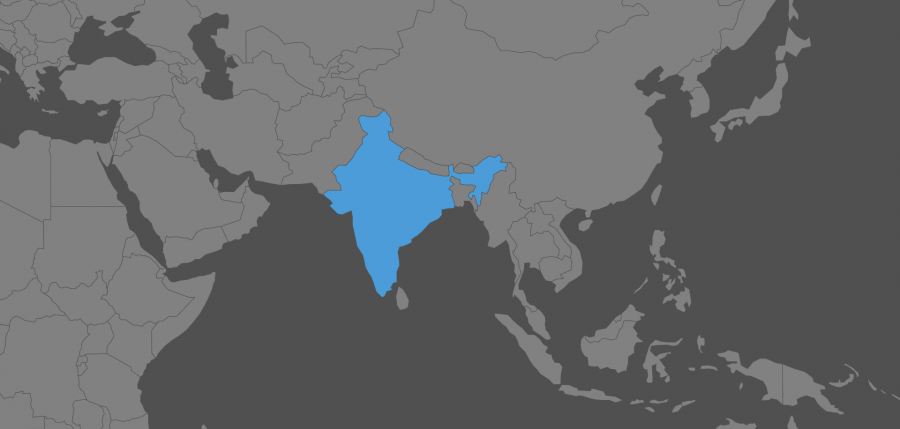
Practical information
Tourist Visa: I bought my visa without any problem in Kathmandu (Nepal), although there were long queues and I had to wait three days. I got a multiple-entry visa for a period of six months and this is the only one I recommend to those travellers who want to go through entire India and visit all the neighbouring countries of the Subcontinent. TAt that time Polish citizens did not have to pay for a visa, but it could have been changed by now. Americans and Russians had to pay the most.
Security: while in India I always felt safe although Jammu and Kashmir, and Assam are meant to be potentially dangerous. Over there White people are seen only on films what brings a very unpleasant attention. You should also be careful with petty theft, rickshaw drivers and other con artists who tell the truth only when they make a mistake. I travelled around the whole of India and I never had big problems but I advise to never listen to those who are super “helpful” and who want to arrange everything for us at a high commission. Trust only what you can check by yourself because even though there a good people in India, unfortunately there are also a lot of scammers and thieves. Deception comes from Indians naturally, especially towards Whites who they see as millionaires. It’s a part of their culture. You also need to watch out for children who first pretend to be in need and have tears in their eyes and then they surround tourists like locusts and rob them in groups.
In recent years there has been a rape plague in India, also on European women. For this reason I start to doubt whether India (as well as the multi – “cultural” Europe) is still a safe country for women. It is also important to be careful with drugs which are sometimes combined with rape.
! The above does not apply to every Indian person and this country would surely delight with a different culture and beautiful nature, but one should be wary because everything I mentioned above takes place in India on a large scale. India is a country for sensible tourists, not for liberals.
Moving around the country: not a problem, if you have time and a soft pillow. The trains are a better option as they travel smoothly. Buses, including sleepers, bounce pretty high in the Indian pits. In India, nobody rushes anywhere, that`s why I advise to not to count on punctuality.
Prices: (for 2006/07 when £1 = 80 INR) India is a very low-cost destination. In Delhi I paid $10 for a double room, but in other cities, even from $2 to $5. Food is a matter of a dollar or less, but especially India I do not advise to travel on a very low budget, because the conditions can be extremely unpleasant. Transport is one of the cheapest in the world but has many disadvantages. The prices for services should be always agreed in advance!!!
Climate: in the north tropical monsoon, and in the south-west wet, dry in the Lowland area of ??Hindustan, subtropical mountainous in the Himalayas. In this vast country there are cyclones and heavy rainfalls and droughts. The air temperature ranges from about 15°C in the Himalayan foothills to 45°C in Delhi, or even more. The air temperature averages from about 25°C-30°C, but at the same time in the Thar desert it can be about 36oC.






